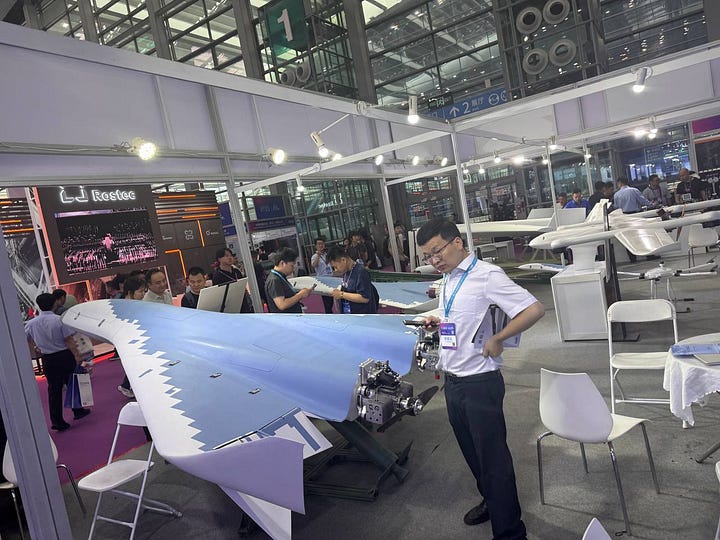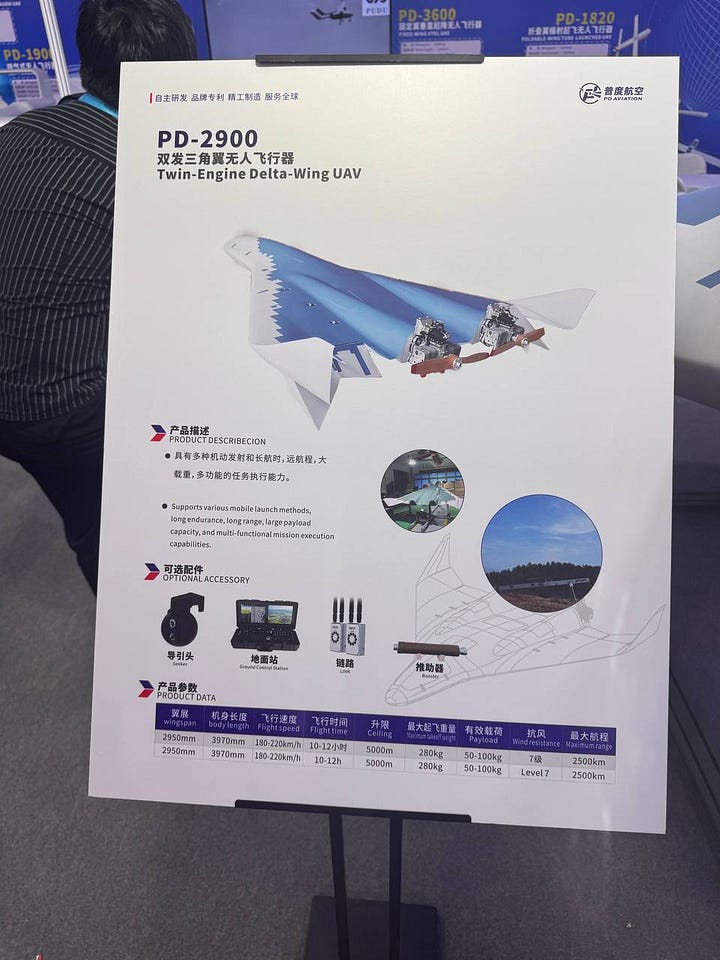China's NORINCO Displays Expanding Array Of Uncrewed Aircraft, Draws Attention To Chinese Strike Drone Technology
🇨🇳
Chinese state media recently released a segment focusing on the expanding array of uncrewed aircraft of different types offered by the state-owned military industrial conglomerate NORINCO. The video is notable in multiple respects and features a diverse array of both multirotor drones and fixed-wing drones, including single-use propeller-driven strike drones.
The video features a container-launched design that is analogous to the Israeli Harpy, which China received from Israel for use by the People’s Liberation Army (PLA). This particular strike drone design is optimized for use against actively emitting radars. Note how the wing stabilizers only extend above the wing. As with many designs of this type, this propeller-driven strike drone is launched with the assistance of a jettisonable solid rocket booster.
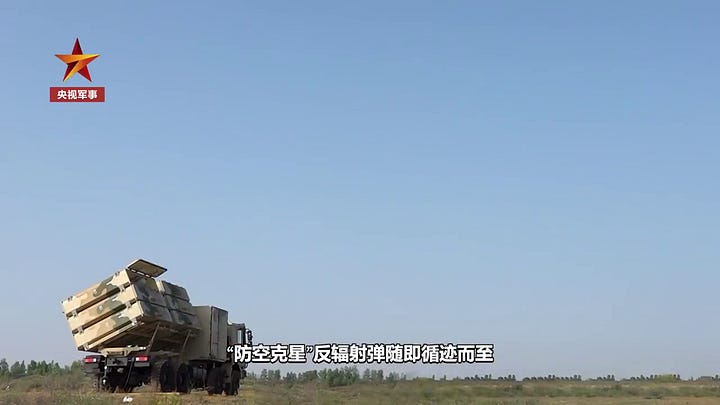

The footage capturing the strike drone undertaking a steep dive in its final moments of final highlights the availability of an airburst fusing option, which is an important feature given the limited destructive radius of the small warhead. Note the bulbous nose section, which houses the equipment required for a passive radiation homing guidance system that allows the strike drone to home in on the position of an emitting radar.
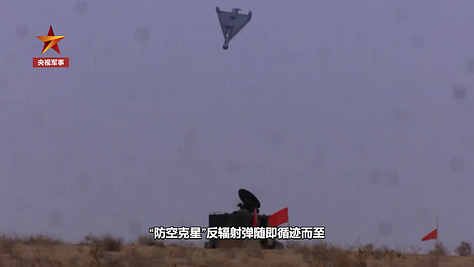
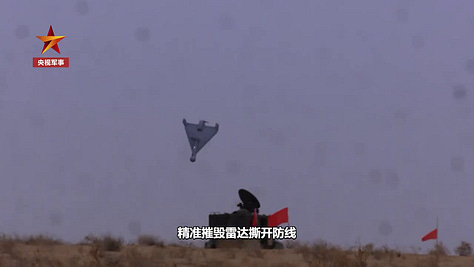
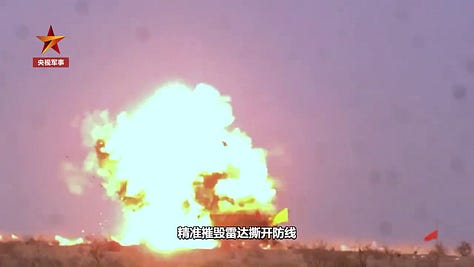
One of the big limitations of most of the heterogeneous Shahed-136/Geran-2/Garpiya strike drone specimens that Russia has employed to date is the absence of an airburst fusing option, which is to say that these Iranian-origin strike drones are fused to detonate upon impact with the ground/the first object to be in the way. To be clear, airburst fusing is not optimal for all roles and against all targets. It is, however, particularly useful for use against radars and air defence systems more generally.
The following strike drone design has wing stabilizers that extend both above and below the wing. This particular design is not stored in containers but is also launched with the assistance of a jettisonable solid rocket booster. Note the absence of a discernible nose-mounted, which suggests that this design is wholly reliant on an inertial navigation system that is augmented by Global Navigation Satellite System (GNSS) signals.
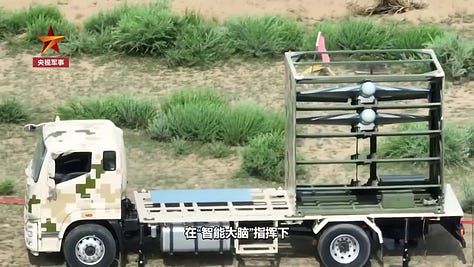
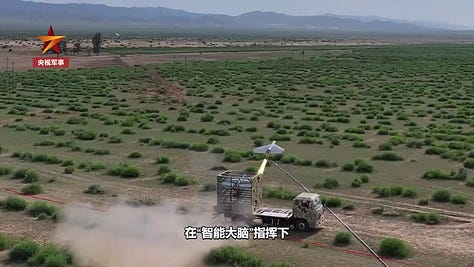
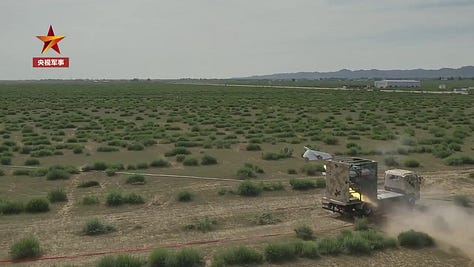
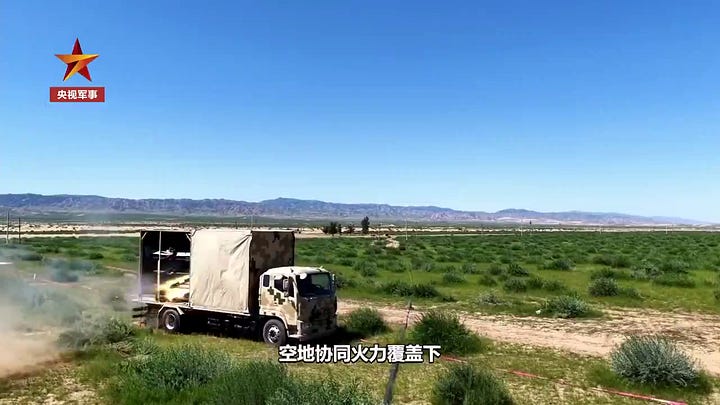
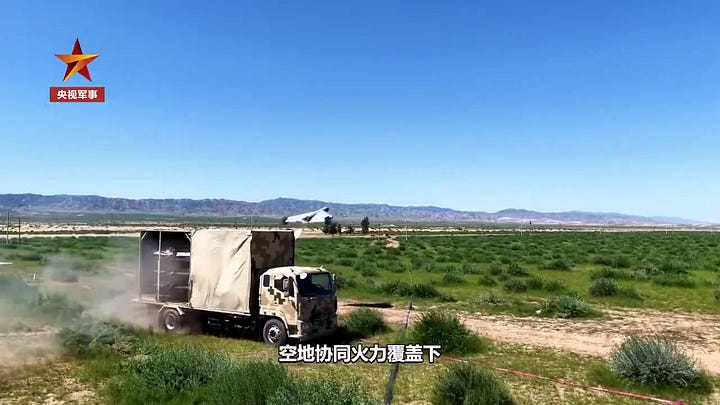
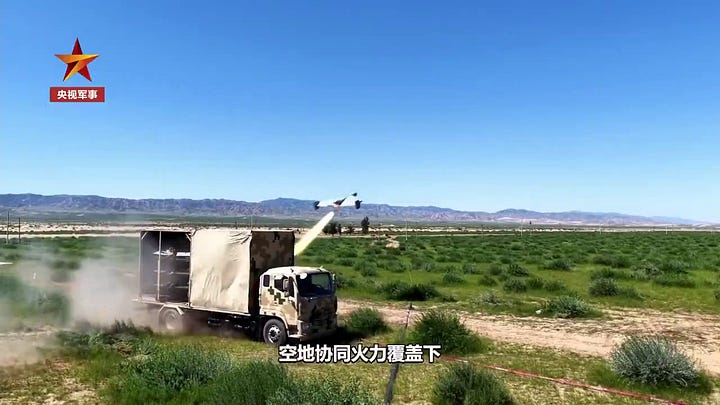
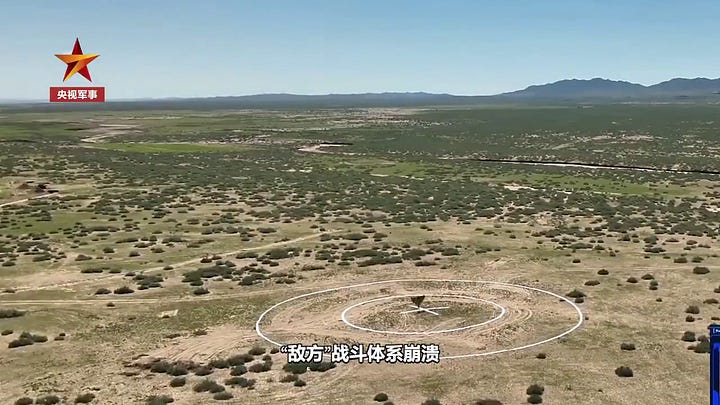
China’s Fragmented Uncrewed Aircraft Industry
There is a problematic tendency among observers to say that “China” has developed x or y even though it is more accurate to say that a Chinese company, including a Chinese state owned enterprise (SOE), has developed x or y, not least in a context in which China’s military industrial sector and uncrewed aircraft technology subsector are both characterized by a high level of fragmentation. Simply stated, not every Chinese system developed to the level of a working prototype will receive a PLA production contract and will not, as such, be deployed by any part of the PLA. China’s fragmented military industrial sector is, in its own way, profit-seeking and pursues profits by finding export customers. Multiple Chinese SOEs may compete for the same export orders after having developed broadly comparable systems, only one of which may ever receive a production contract for deliveries to the PLA. For this reason, this video included in this post is most accurately characterized as a display of the expanding array of uncrewed aircraft of different types offered by the state-owned military industrial conglomerate NORINCO. Whether the PLA will operate all of the NORINCO systems featured in the video remains to be seen.
It is also important to point out that not every cropped delta wing propeller-driven strike drone design is an analogue to the Iranian Shahed-136 or its smaller, lighter, and shorter-range predecessor, the Shahed-131. The Shahed-136 is significantly larger and heavier than most known propeller-driven strike drone designs and is notably advertised as having a nominal maximum range of 2000 kilometers while equipped with a 50-kilogram warhead. The NORINCO strike drones featured in this video are considerably smaller, lighter, and shorter-range designs. Chinese industry has, however, essentially copied the Shahed-136 in the form of the Sunflower 200, which is marketed by another Chinese SOE, Poly Technologies, which competes with NORINCO for PLA and export orders alike.
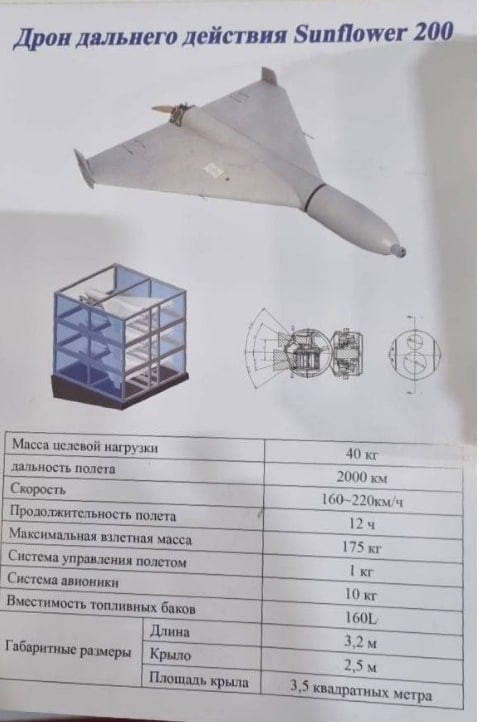
Reports indicate that the Sunflower 200 has been exported to the UAE and is the focus of a collaboration between the UAE’s EDGE Group and a Chinese company, COBTEC, presumably for deliveries to the UAE military.

COBTec recently marketed the Sunflower as a firefighting drone. While an amusing application of a design that can otherwise be employed as a much lighter—and much slower—analogue to a cruise missile, there is ample precedent for Chinese industry, including the primarily state-owned military industrial and aviation sectors, to pursue commercial opportunities wherever possible. It is also important to note that the Chinese government and Chinese industry have a longstanding reputation for out-of-the-box thinking when it comes to firefighting. This includes the use of rockets with fire-retardant payloads and, more recently, the use of heavy-duty multirotor drones to elevate hoses for the purpose of combating fires in high-rise buildings. Hence, while this uncrewed aircraft is unlikely to have been originally developed with firefighting roles in mind, it is not unusual to see Chinese industry market products in this manner. There are, of course, far more mundane and all too plausible reasons for marketing the Sunflower 200 in this manner—it offers a modicum of (not very) plausible deniability when this uncrewed aircraft design is exported as a firefighting system only for the end user to “adapt it” for use as a long-range strike munition.

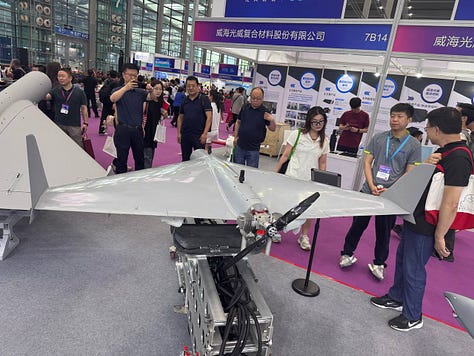
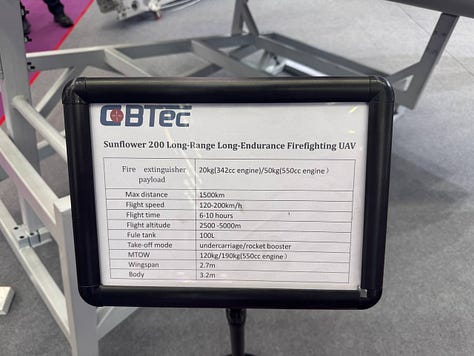
Other Chinese SOEs are also involved in this area. The China Aerospace Science and Technology Corporation (CASTC), which is primarily active in space and missile technology, presented its TS-70 and TS-180 designs at the 2024 iteration of the Zhuhai Airshow.
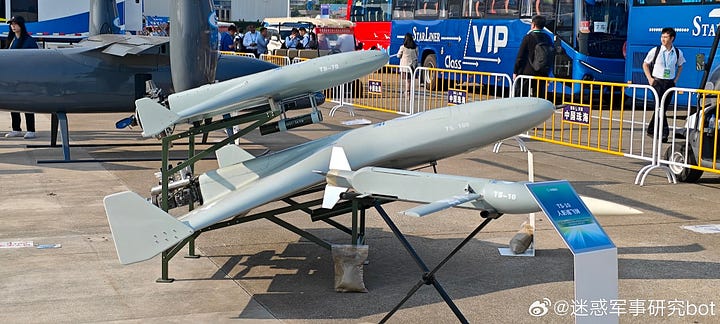
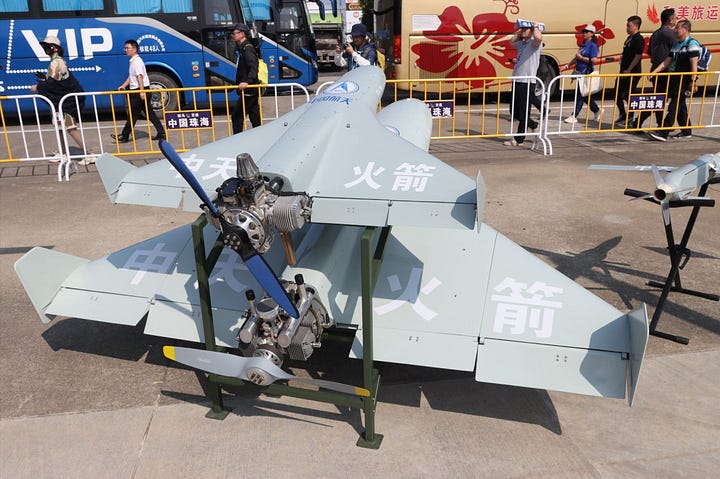
Smaller players are also chasing both PLA and export orders. FD Aviation’s PD-2900 is not only a particularly large and long-range design but is also notably equipped with two piston engines and is driven by two propellers. It remains to be seen if the PLA or any export customer will order this unusual design.
